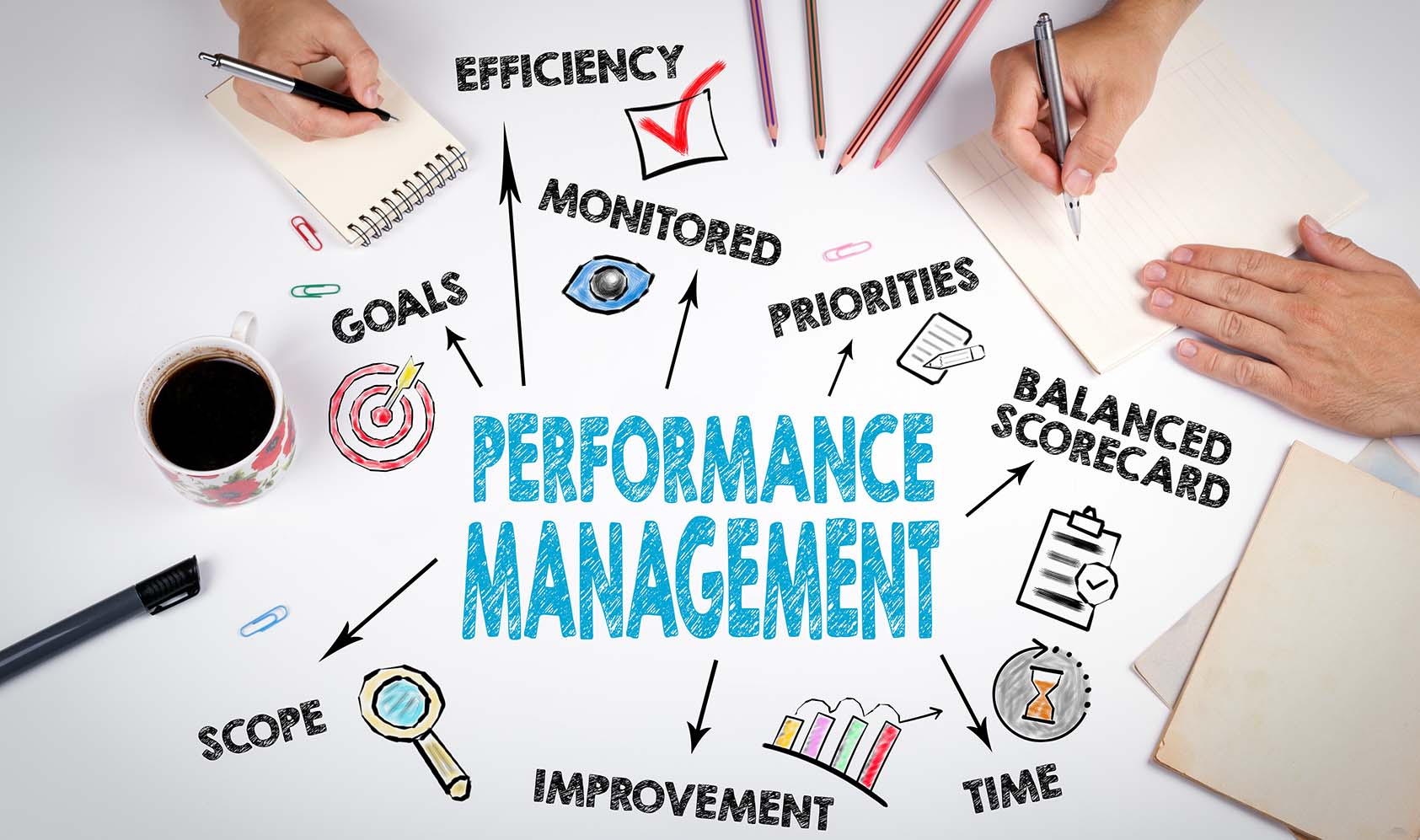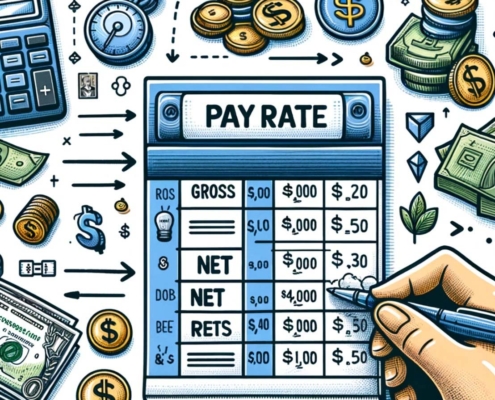Learn About Performance Management (What is it and How to Get Started)
Performance management is the process of continuous communication and feedback between supervisors and their workers concerning job duties, development planning, performance expectations, priorities, and job responsibilities.
By Brad Nakase, Attorney
Email | Call (800) 484-4610
What is performance management?
Performance management may be defined as a collection of systems and processes that is meant to develop workers so they may do their jobs successfully. Performance management is an ongoing process of communication between an employee and a supervisor for maintaining or improving employee job performance through the use of performance assessment tools.
The purpose of performance management is to aid employees with building skills that permit them to do better in their positions, achieve their potential, and increase personal success while also contributing to the strategic goals of the company. Effective performance management allows companies to make sure their workers understand their purpose, receive helpful feedback, and get the support they need to achieve business goals.
Successful performance management creates an ongoing dialogue between managers, employees, and Human Resources.
The performance management pipeline is systematic and strategic. It merges written and verbal components, both of which occur over the year, resulting in a yearly performance evaluation, or appraisal. The process may be summarized as the following elements:
- Create clear expectations
- Set individual goals that correlate with business objectives
- Provide continuous feedback
- Evaluate results
The performance management process is tied to career decisions like bonuses, promotions, and terminations.
In this article, our attorney for employers and HR discuss performance management as follows:
What are the goals of performance management?
The main objective of performance management is to coalesce an employee’s individual goals with the company’s objectives. Performance management tries to create the competencies and skills that employees require to boost their performance in a particular role. These skills, in turn, help the company achieve its goals.
According to a Betterworks report, about 20% of employees reported that their objectives are established on an annual basis and then not reviewed again. About 15% claimed no goals were set. About a third of workers reported that they do not have face-to-face meetings with managers and do not get consistent feedback that can help them improve performance. Ten percent of employees never receive any form of feedback whatsoever.
One of the goals of performance management is creating expectations so that workers are aware of standards. They should understand what they can gain from meeting these benchmarks, including rewards, compensation, and even promotions.
Ongoing feedback is essential to helping employees comprehend their position, correct any errors, and grow as individuals. With feedback, they can consistently improve their work performance and achieve a sense of accomplishment. The company then benefits from an engaged, qualified, and skilled workforce.
According to a study by Willis Tower Watson, companies that used performance management programs were 1.5 times more likely to outdo their competition in financial metrics. They were 1.25 times more likely to experience an increase in worker productivity.
Performance management has been shown to improve both team and individual performance, which can help companies achieve their objectives and goals. For instance, if a company goal is to increase revenue, controlling the performance of sales employees is critical.
Performance management also lets workers understand how their personal goals fit within the company’s objectives. When they see how their contributions improve company performance, they will feel more engaged and satisfied.
What is the importance of performance management?
If a company achieves its performance management goals, it may expect to enjoy the following benefits:
A workforce for the future
By creating an ongoing line of communication between management and employees, HR and management can reveal potential performance and skill gaps in the company. You may then attempt to remedy these, providing the company with an advantage over the competition.
Increased employee engagement
When performance management is done correctly, it creates honest expectations for workers. It should provide employees with development and learning opportunities, setting up a career path in the company. They should understand how their role helps the company meet its business goals. Further, ongoing performance management makes employees feel valued, which in turn makes them more receptive to feedback.
Higher employee retention
When a worker is able to see their progress at work and can visualize a promotion, or more largely a career path, he or she is more likely to stay engaged and want to remain with the company in the long-term.
Culture of trust and feedback
It is important to create a culture of transparency, communication, and trust. This starts with HR initiatives and leadership. From there, it reaches the rest of the business. If managers are committed to providing honest and helpful feedback, this encourages workers to show the same honesty and openness. This fosters mutual trust, and an overall healthy work culture.
Improved organizational performance
In the end, monitoring employee performance results in major improvements in company performance. This includes customer satisfaction and revenue growth. It is therefore worthwhile helping workers develop, learn, and perform at their best.
Bryan Adelson, of Red Clover HR, says that companies should understand the reason behind their performance management strategy. That is to say, what is the value of conducting these discussions? What do you want from them? The answers to these questions will assist in structuring and providing effective results to both employees and the company at large.
What are the stages of performance management?
There are four main stages in a traditional performance management cycle:
Planning
This stage is devoted to creating performance expectations, which should be shared with employees. Job descriptions should delineate these goals in order to bring in the right workers. After a candidate is hired, you will need to reaffirm these standards and establish goals. Go over employee performance metrics together so that there are no misunderstandings.
Performance management plans should not be set in stone. Company objectives may change, and plans should be flexible.
It is essential to involve the employee in the planning process. This involvement increases motivation and satisfaction.
Monitoring
In the second state, managers and HR should observe employee performance and see if it meets the established goals. Provide feedback to workers concerning their progress. It is best to do this on a regular basis, rather than once or twice a year. This way, any problems can be corrected straight away.
Software can help track employee performance, though reports and data should not be a replacement for one-on-one conversations.
Developing
During this stage, gathered data is analyzed and acted upon to improve employee performance. To correct underperformance, HR may offer refresher courses, performance coaching, further training, or other learning and development methods. HR and managers can further improve performance by giving extra assignments that can help improve performance and knowledge. This will allow employees to further excel.
Rating and rewarding
This final stage involves reviewing employee performance. Performance should be given ratings throughout the year during an appraisal or performance review. This rating can help assess the value that an employee adds to a company. It also lets managers know when changes need to be made. For 360-degree feedback, employees should be given the opportunity to provide feedback to their managers.
If performance is consistently below average, a dismissal may be in order. A company should be sure to acknowledge and reward excellent performance. This reward may take the form of praise, a raise, or a promotion.
What are the best practices within performance management?
Examine what works and does not work
Prior to implementing any changes to your current performance management tools or process, you should understand what is working well and what is not. Human Resources should conduct a survey among both managers and employees to review opinions on the current process, as well as suggestions on what should change.
Aling with studies and research, these findings may be presented to executives and other decision-makers who can drive change in the company. It is important to show them the effect that a better performance management process has on the business.
Select the right approach
In performance management, there are two typical approaches. These are a behavioral method and a results-based method.
With the behavioral method, behaviors are recognized and assessed, and employees are reviewed based on their effort and behaviors. This method is helpful when planning desirable future behaviors, especially when individual results are difficult to quantify.
With the results-based approach, employees are assessed based on objective standards. In this case, the focus is on output with regard to quality and quantity. This is a good method when there are many ways to perform a job. The results matter more than the way they are achieved.
When selecting an approach, consider the particular role to ensure the efficacy of the performance management process.
You should also review the process as your work model changes. For example, perhaps your company is exploring remote and hybrid working models. According to a study by Willis Tower Watson, about 15% of companies have changed their performance management system to better fit hybrid and remote work models.
Meet and train managers
Managers are a key part of the performance management system. They are responsible for motivating, engaging, and developing workers. It is therefore critical that HR develops a plan for training managers in giving and receiving feedback.
Managers should receive training on how to establish an open, ongoing dialogue with employees.
Set SMART goals
Employees and managers should establish SMART goals for employee performance, bringing HR into the fold when setting employee development goals.
Every worker should have a personal set of KPIs, or key performance indicators. This way, they can better understand their manager’s expectations. It also allows their manager to monitor their achievements.
With these goals in place, you may measure performance and identify areas for improvement.
Apply ongoing performance management
Willis Tower Watson also discovered that over 90% of companies credited driving performance as a critical goal for performance management. However, less than half reported that their performance management program achieved that goal.
One of the main reasons for this is the lack of regular performance appraisals throughout the year. Similarly, there is a lack of one-on-one meetings where coaching and constructive feedback are provided.
Human Resources can teach managers how to effectively supply employees with constructive criticism. Such feedback increases motivation and identifies small issues before they become big problems. This system helps managers coach underperforming employees, providing them with the tools they need to get better.
Ideally, performance management is an open, continuous dialogue that happens many times during the year, not just at an annual meeting. With this approach, there is prompt feedback, goal-setting, and accurate reviews of worker performance.
More and more innovative companies are investing in agile performance management. This approach focuses on frequent check-ups, constant learning, and fostering trust and team bonding.
Set up a formal system
A continuous process of performance management improves employee motivation, performance, and engagement. That said, a formal appraisal or performance review system is just as vital. This system would reward top-performing workers, giving them a bonus, a raise, or a promotion for meeting certain objectives.
Help employees create development plans
When workers have a career progression plan with a company, they feel empowered at their place of work. This helps them to take control of their professional development, thus reducing the company’s turnover rates.
HR professionals should work with managers to better understand workers’ needs, help employees with any training, and schedule meetings to talk about career development.
It is notoriously difficult to implement employee development plans. This is because employees and managers are simply too busy. HR can help by creating templates that managers can use to establish development plans with team members.
Employ technology
The use of HR software and technology can improve the effectiveness and efficiency of the performance management pipeline. Data can provide patterns and insights that surveys and manual tracking cannot.
Technology, when used wisely, can save time. But it can only do so if a smart performance improvement plan is implemented. Managers should be able to see current data at any time to assess progress and re-evaluate goals.
That said, it is crucial to remember that performance management is focused on people. Software should not replace person-to-person dialogue, including difficult conversations between employees and managers. Managers should not shy away from this responsibility. But data has its place, and it can eliminate bias, facilitate honest conversations, and assure employees that they are being assessed objectively.
What are some examples of successful performance management?
HSBC
HSBC invested in a Human Resources mobile app that allows managers and employees to share feedback and document achievements.
Employees are able to review a to-do list, their development and performance plans, personal employment information, and online learning resources. With the help of the app, managers can set goals, review productivity, and manage approvals all on the go.
The app works well with remote and flexible working models. It has forged a stronger bond between employees and managers, with workers feeling better supported. End-of-year reviews feel more valuable.
Deloitte
Deloitte invested in a novel performance improvement program that had managers conduct frequent check-ins with employees about priorities, strengths, and performance. Employees filled out surveys that helped team leaders see the process from their point of view and make adjustments as necessary.
All employees also received custom career development plans. And everyone received the help of a career coach to help them develop their abilities.
Data has helped Deloitte’s underperforming employees respond to constructive criticism and take action. It has also improved the company’s understanding of its staff, tam, and trends in leadership that were previously invisible. One example of this is the link between frequency of feedback and employee performance.
Ikea
Ikea’s mission was to boost business performance by improving leadership and management skills. The company implemented a training program for management, testing it on 750 managers in the UK. This training included developing coaching skills, an interactive seminar, certification, as well as the recognition of coaching champions.
Managers who received this coaching witnessed their departments undergo a 5% KPI increase. They saw a 30% increase in management ability scores.
What is the difference between performance appraisals and performance management?
Performance appraisal refers to the individual meeting between an employee and their manager. These sessions typically occur twice a year, or even just once a year. Performance management, by contrast, is a regular, objective, and systematic process of training an employee to do their job to the best of their ability. Performance appraisal is therefore a component of performance management.
Have a quick question? We answered nearly 2000 FAQs.
See all blogs: Business | Corporate | Employment
Most recent blogs:


































